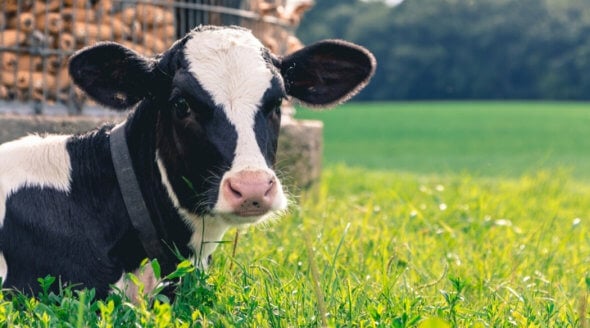All About Animals: Secondary Teachers: Lesson Plan 1: Old versus New: Feeding the World
Teachers’ Note: Download this page and hand a copy to each class member. The article in the lesson plan is intended to supply a point of view with which your pupils may not be familiar. You can either read the article aloud with them or ask them to read it to themselves. After they have investigated this subject more fully, you can ask them to discuss the issues in class or set this as a written task. They can either:
- write a formal report making suggestions about where they see the future of farming and why, or
- write a magazine article to try and persuade readers that their views on modern agriculture versus peasant farming systems are correct.
In the old labour-intensive peasant farming system soil fertility was maintained with dung, crop rotation, companion planting, green manure, compost, mulching and fallow. Draught animals supplied the energy, the best seeds were selected from each crop for the next year and farmers delivered the bulk of their produce to the local market.
The modern farmer would recognise little of this way of life. According to Jos A Lutzenberger, agronomist and campaigner against the overuse of agrochemicals, the modern farmer is “little more than a tractor driver and poison sprayer”.
Today’s system of food relies upon: oil fields and all kinds of mines for metal and other raw materials; refineries and smelters; the chemical industry; the worldwide transportation system (consuming large quantities of fossil fuels); supermarkets; and the packaging industry. Advertising executives work to promote the products and television, radio and printed journals run the fruits of their work. Non-farming workers pay taxes which subsidise the farming industry, thus adding their work to the number of hours needed in order to Keep Britain Farming.
Lutzenberger estimates that we still utilise 40 per cent of all the working hours in order to produce and distribute food. How far have we come?
Yielding Benefits
Farming certainly has changed a lot over the last 50 or so years and with significant technological advances and huge leaps in chemical use to boost production, we would certainly expect yield per acre to have risen sharply in this time. But there is one area of farming that destroys more food than it produces and as a result leads to widespread environmental destruction: animal agriculture.
The Uruguay Valley of Southern Brazil was forested but over the past 50 years or so has been obliterated. The forest was cleared and burned to allow more land to grow soya beans. These protein-rich beans were not intended for the poor and hungry of Brazil but were shipped to Europe for cattle feed.
It takes up to 10 kg of vegetable protein to produce just 1 kg of meat so it is no wonder that more land must be made available if we are to continue wanting to eat meat at the rate we currently do. This is one of the reasons why campaign group PETA state: “you can’t be a meat-eating environmentalist.”
Peasant farmers in Mexico grow maize and among the corn stalks that also serve as supports for climbing beans, they grow pumpkins and squash, potatoes, tomatoes and many other sorts of vegetables. In fact they produce 15 tonnes of food per hectare without the use of commercial fertilisers and pesticides. As pressure mounts from multinational companies and international agricultural policies, thousands of peasants give up the land and move to the cities, where living in the slums they must buy food produced on farms that are less productive than was their own.
More Food, Less Meat
In intensive farms we feed animals from our own crops. Maize, soya, cereal and grains are all fed to animals who we later kill in order to eat them. Half the weight of the living animal – feathers, bones, intestines – is discarded. Even the most efficient operations use about 2.2kg to produce 1 kg of living weight chicken, half of which is human food. Thus 2.2:1 becomes 4.4:1.
Throughout the world the increased number of grain-fed livestock has forced countries to import more feed and that includes almost all Developing Nations. The increasing number of countries looking to the world market for food for animals translates into food scarcity for the world’s poorest.
The 600 million tonnes of grain that is fed to farmed animals around the world could feed more than a billion people. There are currently 1.2 billion underfed and malnourished people in the world.
Using this article as a starting point, investigate the positive and negative aspects of the move toward an industrialised, intensive farming industry in the Western world where more meat is eaten than ever before.

